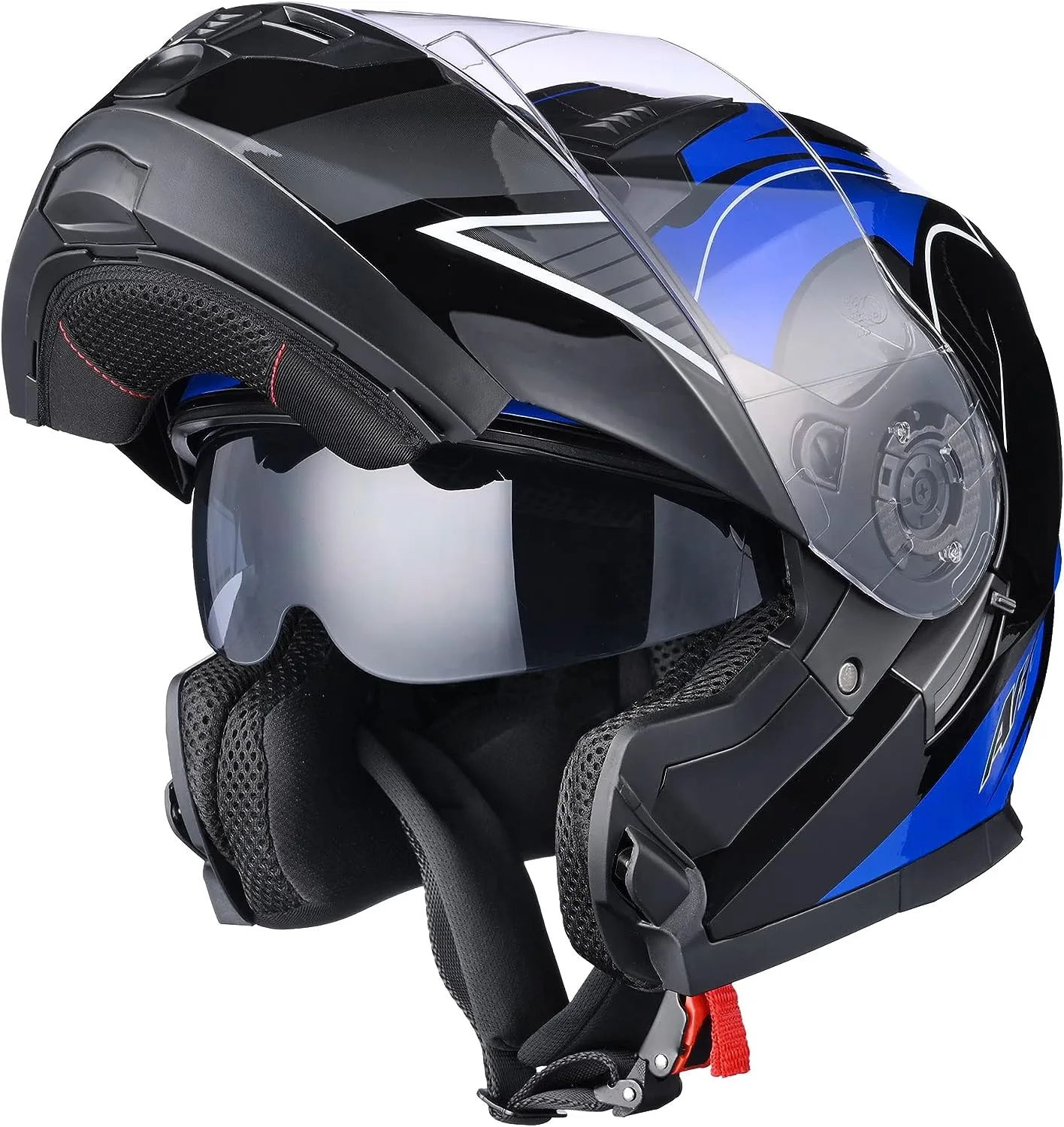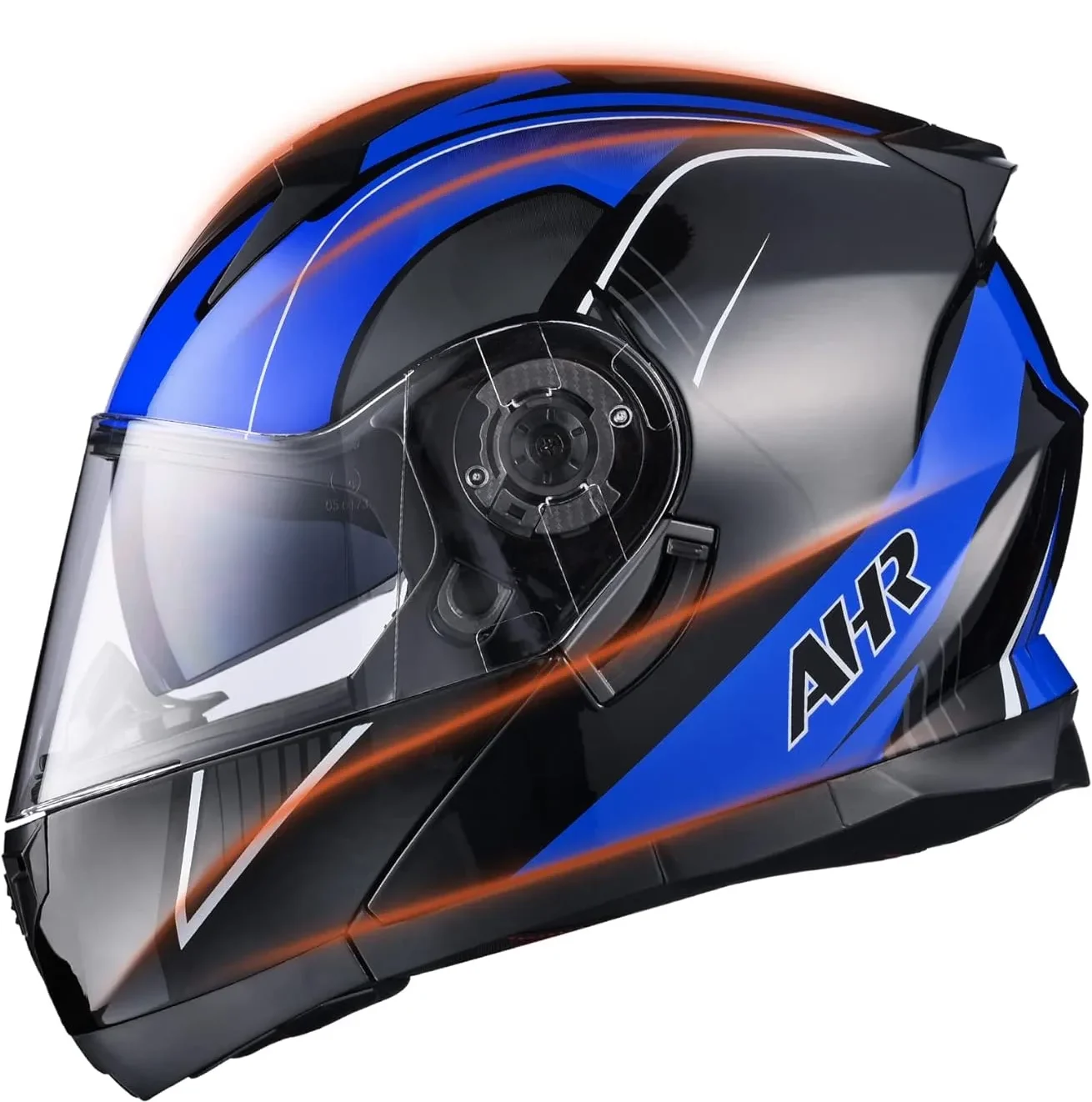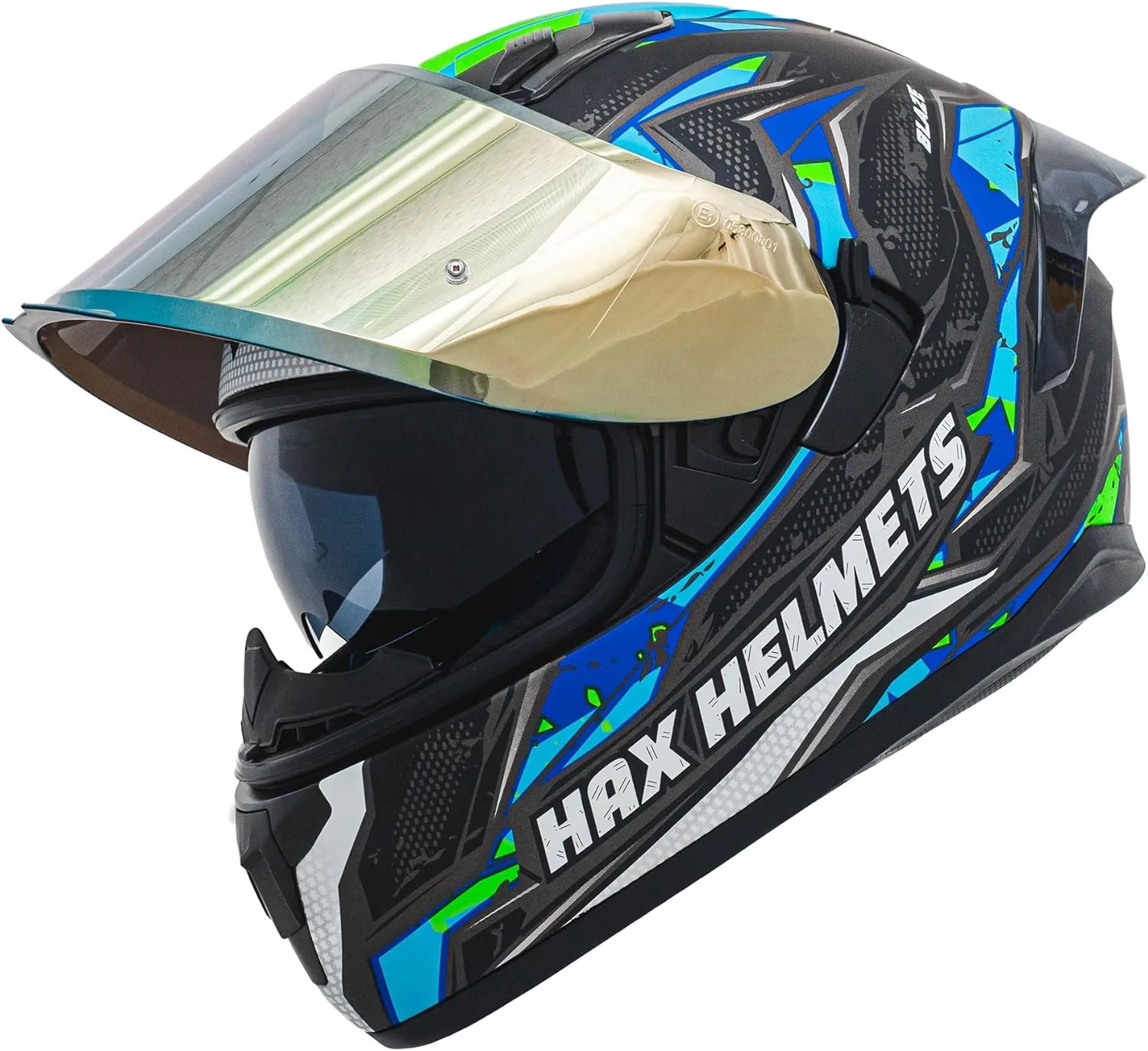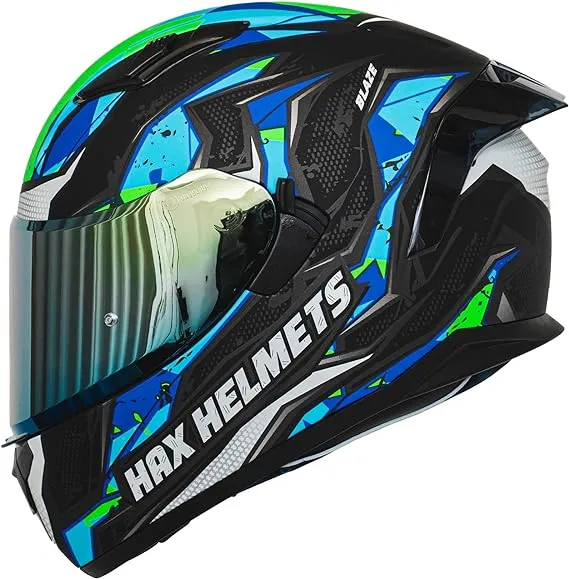Are you looking for a new helmet to protect your head and improve your riding experience? If so, you might be wondering whether to choose a modular helmet or a full face helmet. These are two of the most popular types of helmets among motorcycle enthusiasts, but they have some significant differences that you should know before you buy one.
A modular helmet, also known as a flip-up helmet, has a movable chin bar that can be raised or lowered depending on your preference. This gives you the flexibility to switch between a full face and an open face helmet whenever you want.
A full face helmet, on the other hand, has a fixed chin bar that covers your entire face and offers maximum protection.
But which one is better for you? How do they compare in terms of features, advantages, disadvantages, and safety? In this blog post, we’ll answer these questions and help you make an informed decision. We’ll also give you some tips on how to pick the best helmet for your needs and budget.
Let’s start by looking at the main features of each type of helmet.
Features of Modular Helmets
Modular helmets are designed to offer the best of both worlds: the convenience of an open face helmet and the protection of a full face helmet. They have a hinge mechanism that allows you to flip up the chin bar and expose your face when you need to. This can be useful for various situations, such as:
- Communicating with other riders or people without removing your helmet
- Eating, drinking, or smoking without taking off your helmet
- Getting some fresh air or cooling down when you stop
- Adjusting your glasses or goggles without removing your helmet
- Showing your identity or facial expression when needed


Some modular helmets also have other features that make them more comfortable and functional, such as:
- Sun visors that can be lowered or raised to block the sun or glare
- Bluetooth speakers and microphones that can be integrated or attached to the helmet for communication and entertainment
- Ventilation systems that can be opened or closed to regulate the airflow and temperature inside the helmet
- Removable and washable liners and pads that can be cleaned and replaced to keep the helmet fresh and hygienic
- Adjustable straps and buckles that can be tightened or loosened to fit your head size and shape
Features of Full Face Helmets
Full face helmets are the most common and traditional type of helmets for motorcycle riders. They have a solid shell that covers your entire head, face, and chin, and a visor that can be opened or closed to protect your eyes and vision. They are designed to offer the highest level of protection and performance, especially for high-speed and long-distance riding. They have several advantages over modular helmets, such as:
- Better aerodynamics and stability that reduce wind noise and drag
- More impact resistance and durability that withstand crashes and collisions
- More insulation and soundproofing that keep you warm and quiet
- More coverage and security that prevent debris, insects, and rain from entering your helmet
- More style and customization options that suit your personality and preference


Full face helmets also have some features that make them more user-friendly and convenient, such as:
- Pinlock systems that prevent the visor from fogging up in cold or humid conditions
- Quick-release mechanisms that allow you to change the visor easily and quickly
- Anti-scratch and anti-reflective coatings that protect the visor from damage and glare
- Chin curtains and breath deflectors that reduce the airflow and moisture inside the helmet
- Emergency release systems that enable the helmet to be removed safely in case of an accident
Modular Helmet vs Full Face Helmet: Pros and Cons
Now that you know the main features of each type of helmet, let’s compare them in terms of their pros and cons. Here are some of the factors that you should consider when choosing between a modular helmet and a full face helmet:
- Safety: Full face helmets are generally safer than modular helmets, as they have a stronger and more rigid structure that can absorb more impact and protect your face and chin from injury. Modular helmets, on the other hand, have a weaker and more flexible hinge that can break or malfunction in a crash, exposing your face and chin to danger. However, some modular helmets are certified by safety standards such as DOT, ECE, or SNELL, which means they have passed certain tests and requirements for protection and quality. You should always check the safety rating of the helmet before you buy it, and never ride with the chin bar up, as this can compromise your safety and violate the law in some countries.
- Comfort: Modular helmets are generally more comfortable than full face helmets, as they have more ventilation and breathability that keep you cool and fresh. They also have more space and flexibility that allow you to move your head and jaw freely, and adjust your glasses or goggles easily. Full face helmets, on the other hand, have more insulation and soundproofing that keep you warm and quiet, but they can also make you feel hot and sweaty, and restrict your vision and movement. However, some full face helmets have advanced ventilation and noise reduction systems that improve their comfort and functionality. You should always try on the helmet before you buy it, and make sure it fits your head snugly and comfortably, without causing any pressure or pain.
- Convenience: Modular helmets are generally more convenient than full face helmets, as they have more versatility and functionality that suit different situations and preferences. They allow you to switch between a full face and an open face helmet whenever you want, and communicate, eat, drink, or smoke without removing your helmet. They also have more features and accessories that enhance your riding experience, such as sun visors, Bluetooth speakers, and microphones. Full face helmets, on the other hand, have more simplicity and reliability that make them easier and faster to use. They have fewer parts and mechanisms that can break or malfunction, and require less maintenance and cleaning. They also have fewer distractions and interruptions that can affect your concentration and safety. You should always choose the helmet that matches your riding style and needs, and follow the instructions and recommendations of the manufacturer and the law.
How to Pick the Best Helmet for You
Now that you know the pros and cons of each type of helmet, you might have a better idea of which one is more suitable for you. However, there are still some other factors that you should consider when picking the best helmet for you, such as:
- Budget: Helmets vary in price depending on their brand, quality, features, and design. Modular helmets are usually more expensive than full face helmets, as they have more parts and mechanisms that increase their cost and complexity. However, you can also find some affordable and decent modular helmets that offer good value and performance. Full face helmets are usually cheaper than modular helmets, as they have fewer parts and mechanisms that reduce their cost and complexity. However, you can also find some expensive and premium full face helmets that offer superior quality and performance. You should always set a realistic and reasonable budget for your helmet, and compare different options and reviews before you make a purchase.
- Size: Helmets come in different sizes and shapes that fit different head sizes and shapes. You should always measure your head circumference and width before you buy a helmet, and use the size chart and guide provided by the manufacturer or the seller. You should also try on the helmet and check if it fits your head snugly and comfortably, without being too tight or too loose. You should be able to insert one or two fingers between your forehead and the helmet, and the helmet should not move or rotate when you shake your head. You should also check if the helmet aligns with your eyes and ears, and does not obstruct your vision or hearing. You should always buy the helmet that fits your head perfectly, and avoid buying a helmet that is too big or too small for you, as this can compromise your safety and comfort.
- Style: Helmets come in different styles and colors that suit different personalities and preferences. You should always choose the helmet that matches your taste and preference, and expresses your identity and style. You should You should always choose the helmet that matches your taste and preference, and expresses your identity and style. You should also consider the following factors when choosing the style of your helmet:
- Visibility: The style of your helmet can affect your visibility on the road. For example, a modular helmet with a raised chin bar can reduce your peripheral vision and create blind spots. A full face helmet with a tinted visor can impair your vision in low-light conditions. You should choose a helmet that provides you with clear and wide vision at all times.
- Aerodynamics: The style of your helmet can also affect the aerodynamics of your ride. A helmet that is too bulky or has too many vents can create drag and wind noise, which can slow you down and distract you. A helmet that is too sleek or has too few vents can cause overheating and discomfort. You should choose a helmet that balances aerodynamics and ventilation for optimal performance and comfort.
- Compatibility: The style of your helmet should also be compatible with your motorcycle and your riding gear. For example, a modular helmet might not fit well with a sport bike or a leather jacket. A full face helmet might not match well with a cruiser or a casual outfit. You should choose a helmet that complements your overall look and feel.
Conclusion
As you can see, there are pros and cons to both modular helmet and full face helmet. The best helmet for you depends on your personal preference and riding style. If you value safety, performance, and noise reduction, you may want to go for a full face helmet. If you value comfort, convenience, and communication, you may want to go for a modular helmet. Either way, make sure that your helmet fits you well, meets the safety standards, and matches your motorcycle and gear. To learn more about the different types of helmets and how to choose the best one for you, check out our website for more information and reviews. Happy riding!
